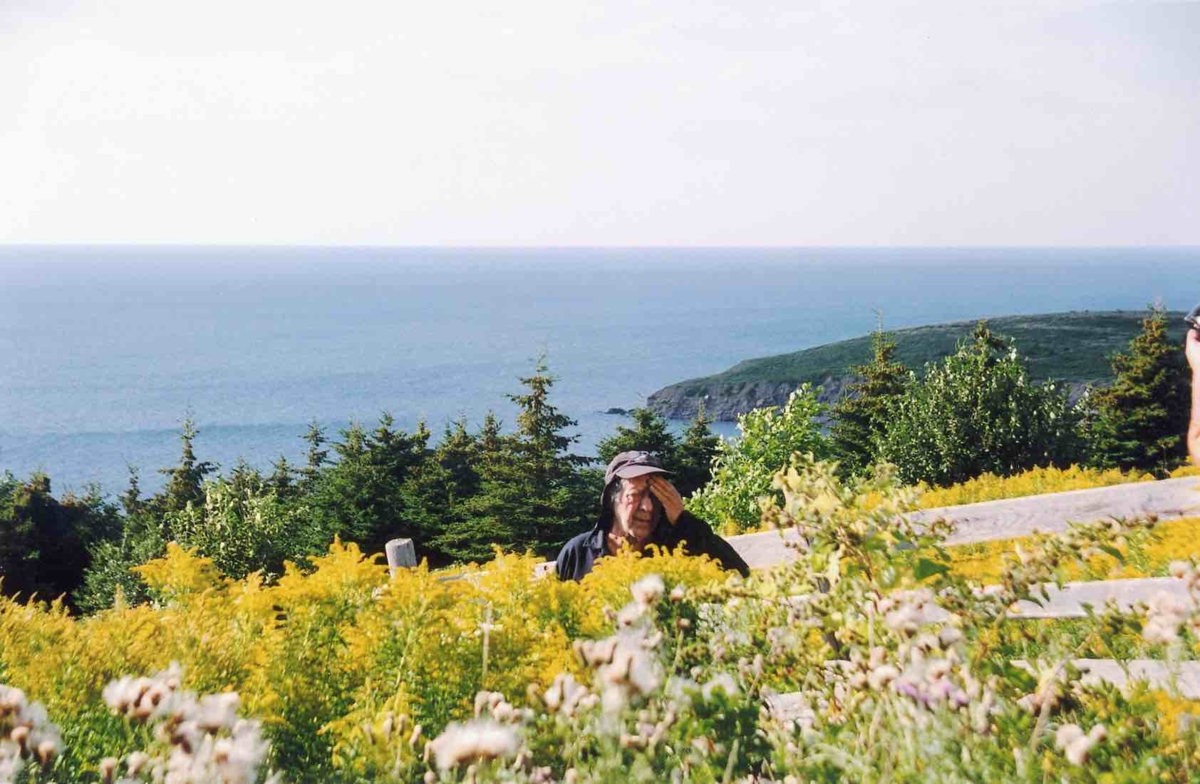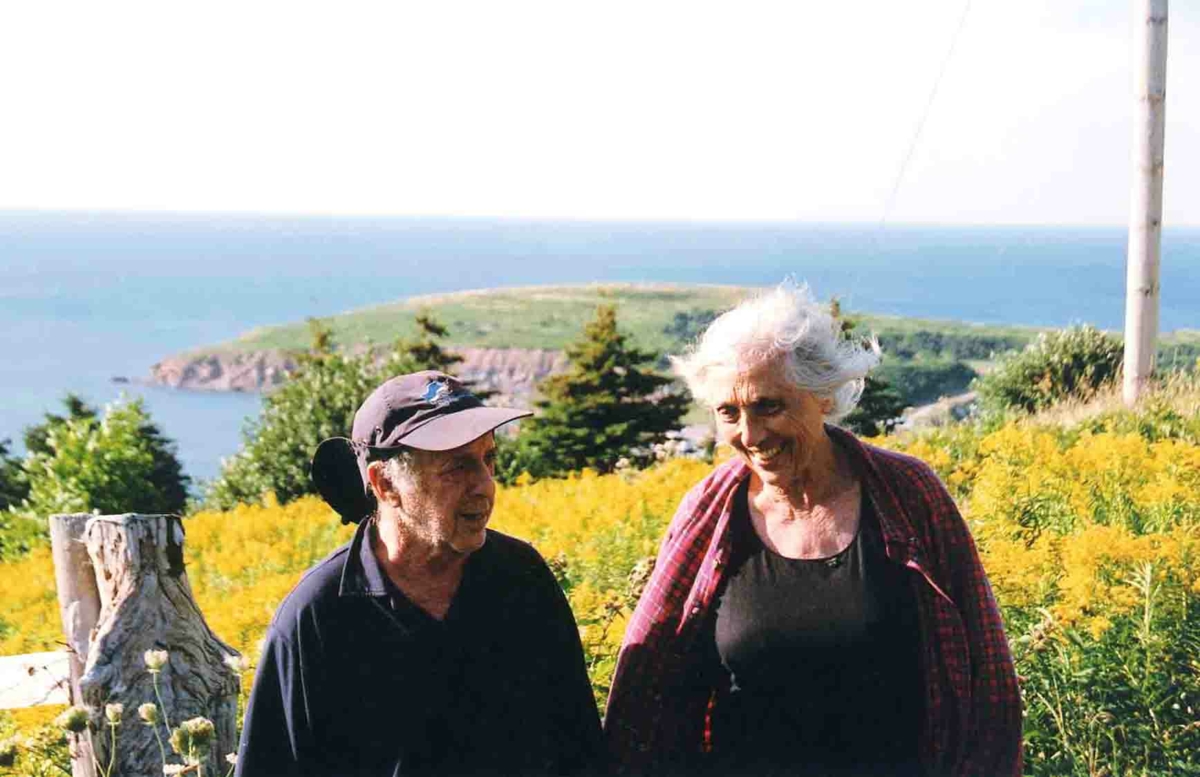The uncomfortable Mr Frank: a filmography
Robert Frank made very few concessions; whether to success, to style, or to photography itself.
But in the visual language he created from film and photo, in this form of poetic writing, made up of scraps and fragments, of fits of enthusiasm closely followed by despair, he built a singular work.
His trembling voice (overlaid) sometimes imparts a dark quality to the beautiful images of his films; conversely, when the image is sad and depressing, the words he dispenses can be luminous.
With his late photos (nervously scratched down to the emulsion) he would give the impression of a kind of image wrecker.
By small, contrasting touches, striking a balance between hot and cold, documentary and fiction, contemplation and introspection, he seems guided by the search for a certain truth.
A human truth, neither beautiful nor ugly but harsh and heartfelt.
He offered advice: "Never believe a man who says he seeks the truth."
Always give him a wide berth. And don't touch clichés with a barge pole.
He first found fame with photography after leaving his native Switzerland for the United States. Noticed from the start by Brodovitch, he even worked for a spell as a junior fashion photographer for Harper’s Bazaar.
But (understandably, in the light of his future work) aesthetics for aesthetics' sake wasn't for him.
He was more inspired by Walker Evans, by a photographic school that goes looking for human toughness (even though the framing sometimes suffers). But he soon moved away from this environment, that he didn't like. His first detours.

Aged 34, he finished publication of The Americans, these 83 now legendary photographs, then put his Leica in a cupboard.
Published by Robert Delpire in his 1958 book, these images are still quite classical in appearance, but by their publishing, their harsh take on reality, they refer to everything except what the America of the 1950s wanted to see of itself.
Yet he no longer wants what he calls "aestheticism" and wants to speak to people through a camera's viewfinder. “The Americans was a big trip to a big country, but photographically it was a very narrow trip. No detours," (1) he would later say.
And not long later, he would direct the iconic film of the Beat Generation, written by Jack Kerouac: Pull My Daisy, though sometimes evading association to the ‘beat’ label that has since been applied ceaselessly.
"I am not a beatnik!" he would exclaim in irritation.
This first film (co-directed, in fact) wasn't necessarily the most important of his own filmography, by his own admission (2).
But the filmed poem has an undeniable charm, and he was a friend of Kerouac and Allen Ginsberg. Their uncompromising poetry would be echoed in his own words, chanted or murmured, throughout his films. Years later he would also work with Patti Smith, worthy descendant of the Beat Generation, on the Summer Cannibals video.

He who helped Jonas Mekas and John Cassavetes found the Anthology Film Archive, this independent film library, flourished (if the word means anything to him) in an underground cinema, Close to Mekas, but also to Stan Brakhage.
He also borrowed from Godard, particularly his use of video collage.
He admired Godard's work but confesses it is better to know the films than to know the man. "We are quite different by nature; he is an intellectual."
He who acknowledges being part of what the American underground and the new wave term the intelligentsia, flatly denies being an intellectual.
Here again, as with photography, the Beat Generation, and underground cinema, Robert Frank was a man of dodges, detours and discomfort.
He still practised photography, vacillating between that and film, writing on the gelatine, making collages, Polaroids, photographs of video screens. But even though the belated success of The Americans secured for him resources he had never had in his life, he remained wary of the art market which treated his photos better than his films
Now, two years after his disappearance, he is no longer around to growl in annoyance or to curtly confound those who come a-calling with their mindless questions!
His work should survive him.
To survive alone all that history involves in terms of rewriting and reinterpretation, and also to survive the corrosion of time; loss of flavour and of favour, digestion by the art market, stereotypes, cult of the author, recovery...
The best way of remaining faithful to the artist is probably to accept the uncomfortable complexity of his work, to not miss one documentary, nor one of his books, of course, and keep an eye out for the too-rare screenings of his own films.

The Robert Frank's films:
PULL MY DAISY – 1959, 28’
16mm Black and white
Directed by Robert Frank and Alfred Leslie, based on the play "The Beat Generation" by Jack Kerouac, whose voice narrates the film. The film includes performances by Allen Ginsberg, Gregory Corso, Peter Orlovsky, Delphine Seyrig and Pablo, Robert Frank's son.
THE SIN OF JESUS – 1961, 37’
35mm Black and white
OK END HERE – 1963, 32’
35mm Black and white
A film influenced by Antonioni and by the French new wave.
ME & MY BROTHER – 1965-68 91' re-edited to an 85-minute version.
35mm, Colour and black and white
CONVERSATIONS IN VERMONT – 1969, 26’
16mm Black and white
One of the first directly autobiographical films. Discussions and reflections with his first wife and his children Pablo and Andrea. Shot before life took everything away from him. Hard to watch this film without sadness.
LIFERAFT EARTH – 1969, 37’
16mm Colour and black and white
This film was a request from Frank by Stewart Brand, American author and thinker, who was notably the author of the "Whole Earth Catalog", a bible to hippies and alternative communities. Accompanied by Danny Lyon, Frank films the participants of the collective happening "the Hunger Show".
ABOUT ME: A MUSICAL – 1971, 30’
16mm Black and white
"My project was to make a film about Music in America. Well, fuck the music. I just decided to make a film about myself."
COCKSUCKER BLUES – 1972, 90’
16mm Colour and black and white
At the Rolling Stones' request, Frank filmed their 1972 American tour. Faced with their world of sex & drugs & rock & roll, we are struck by the murky dimension and the gilded idleness of these stars filmed without detours. Did the Stones expect something else? Most probably, as they banned the film from being screened for a long time, all of which added to the myth.
KEEP BUSY – 1975, 38mm
16mm Black and white
"It is important not to neglect the exterior for the benefit of the interior." A small group of people live on a remote island near Cape Breton, Canada.
LIFE DANCES ON – 1980, 30’
16mm Colour and black and white
ENERGY & HOW TO GET IT – 1981, 30’
16mm Black and white
THIS SONG FOR JACK – 1983, 26’
16mm Black and white
HOME IMPROVEMENTS – 1985, 29’
Video Colour
A visual journal, which associates fragments, filmed objects, and moments of life.
CANDY MOUNTAIN – 1987, 91’
35mm Colour
This road movie accompanies the fictional journey of of a young New Yorker in search of a guitar maker. It's an opportunity for a musical wandering, meeting artists playing themselves: Tom Waits, Arto Lindsay, Leon Redbone, Joe Strummer...
HUNTER – 1989, 37’
16mm Colour and black and white
RUN – 1989, 3'35''
Video for the song "Run" by the group New Order. Frank turns his back on the rules of the genre, and films the video having barely having listened to the song or sought any synchronisation with either lyrics of rhythm.
IT'S REAL (ONE HOUR) – 1990, 60’
Video Colour
LAST SUPPER – 1992, 50’
16mm Colour
MOVING PICTURES – 1994, 16’30''
Video Colour and black and white, silent.
One of Frank's favourite films, which links film and photography.
A reflection on memory, on the fragment, on death.
THE PRESENT – 1996, 27’
Video / 35mm Colour
A video diary, where Frank alternates reflections, sometimes amused thoughts (delete "memory"), references to his daughter Andrea and his son Pablo, both passed, video shots of crows in Nova Scotia... The camera, maybe more than a way of keeping a diary, seems here to be a way of holding on, of being in touch with the things that escape.
SUMMER CANNIBALS – 1996, 5’
Video of the Patti Smith song.
FLAMINGO – 1996, 5’
Video Black and white
WHAT I REMEMBER FROM MY VISIT (WITH STIEGLITZ) – 1998, 7’
Video Colour
A game in the company of French photographer Jérôme Sother, where Frank and his wife June Leaf play old Stieglitz and his wife Georgia O’Keefe visited by a young man in search of revelation.
SANYU – 2000, 27’
Video and 35mm, Colour and black and white
PAPER ROUTE – 2002, 23’
Video, Colour
A video on departures and returns. Robert Frank joins Bobby McMillan on a nocturnal wander around the village of Mabou, where he lives.
TRUE STORY – 2004, 26’
Video Colour and black and white
TUNNEL – 2005, 4’
Video Colour and black and white
This last film had been commissioned to celebrate the boring of the third-longest tunnel in the world in Switzerland... it obviously won't be used by its commissioners. Cow taken to the abattoir, filmed fragments... At most, he seizes on the notion of tunnel as a symbol of a reflection on creation.
1 : Le présent de Robert Frank : photographie et films, Anne Bertrand, d’une certaine manière éditions, La Rochelle (F) ISBN 978-2-917583-03-6
2 : Frank Films, The Film and Video Work of Robert Frank, Brigitta Burger-Utzer, Stefan Grisseman Steidl Verlag, 2009. ISBN 978-3-86521-815-5
Emmanuel Bacquet, July 2021



